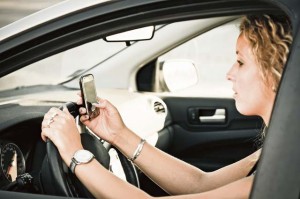
I am sure you have all heard the radio ads on American Forces Network describing the dangers of using cell phones while driving. The 86th Airlift Wing Safety office tracks all the mishap data that occurs in the KMC, and we have discovered a disturbing trend regarding traffic accidents involving distracted driving.
During the third quarter of this fiscal year, the KMC experienced over 110 major accidents. A major accident is defined as an accident that causes at least one personal injury or disables at least one of the vehicles involved. According to the National Safety Council more than 80 percent of all traffic accidents involve some type of distracted driving.
Of that 80 percent, half of these distractions involve cell phone use. Further, approximately 10 percent of distracted driving involving cell phones resulted in fatalities.
If we apply these percentages to the KMC mishap number, we have had more than 80 accidents that involved distracted driving. Although we had a large number of mishaps involving distracted driving, we thankfully have not experienced a military member or family member fatality, but I believe we have been very lucky.
Let’s take at look at distracted driving. The National Highway Traffic Safety Administration defines distracted driving as, “any activity that could divert a person’s attention away from the primary task of driving … These types of distractions include: texting, using a cell phone, eating, drinking, talking to passengers, grooming, using a navigation system, or adjusting a radio,” just to name a few.
Why is using a cell phone or being distracted a cause for concern? Well, the facts don’t lie. A study conducted at the University of Utah compared driver reaction times while using a cell phone and driving a vehicle while legally intoxicated. The cell phone driving was just as likely to cause an accident as driving drunk, if not more so. (Now, don’t read into this too far.)
Both increased the chance for causing an accident, but the use of a cell phone caused a slower recognition and reaction time which led to more rear-end collisions.
The brain is just not made to process more than one complex function at a time. Although you may be able to walk and chew gum at the same time, driving safely and talking on a cell phone is just not possible (unless you are Superman, and I know for a fact that you are not). Thankfully, this study took place in a controlled environment, and only computer pixels were injured.
If you are pulled over in the KMC while using a phone, expect to lose your driving privileges for seven days (as well as have three points assessed).
Almost no one is foolish enough to get in the car with a drunk driver, and the use of seatbelts is now a universal norm.
Let’s make cell phone and driving the next big cultural shift. When you drive, just put the phone away. If you are a passenger, make sure the driver puts down the phone and drives. Nothing can be more important than getting to your destination in one piece. For more information, call the 86th AW safety office at
480-7233.


